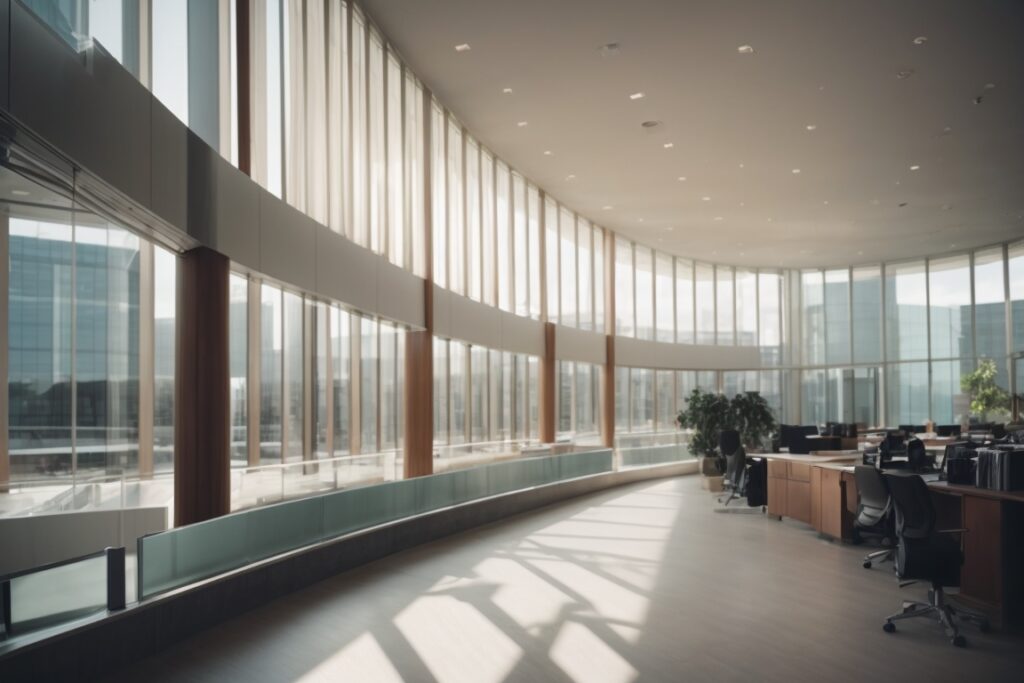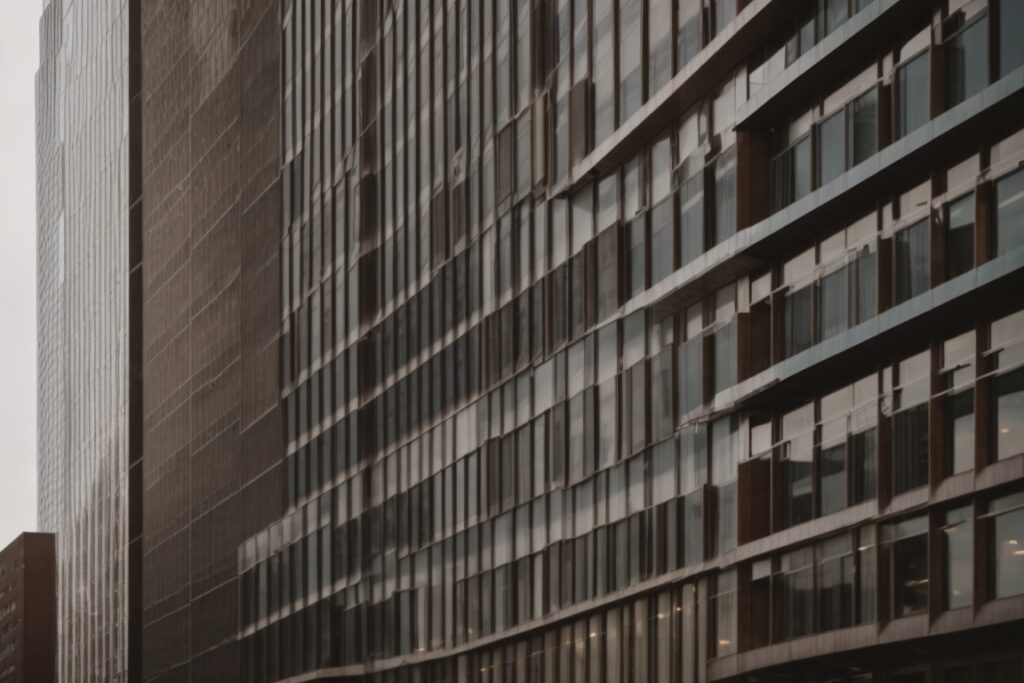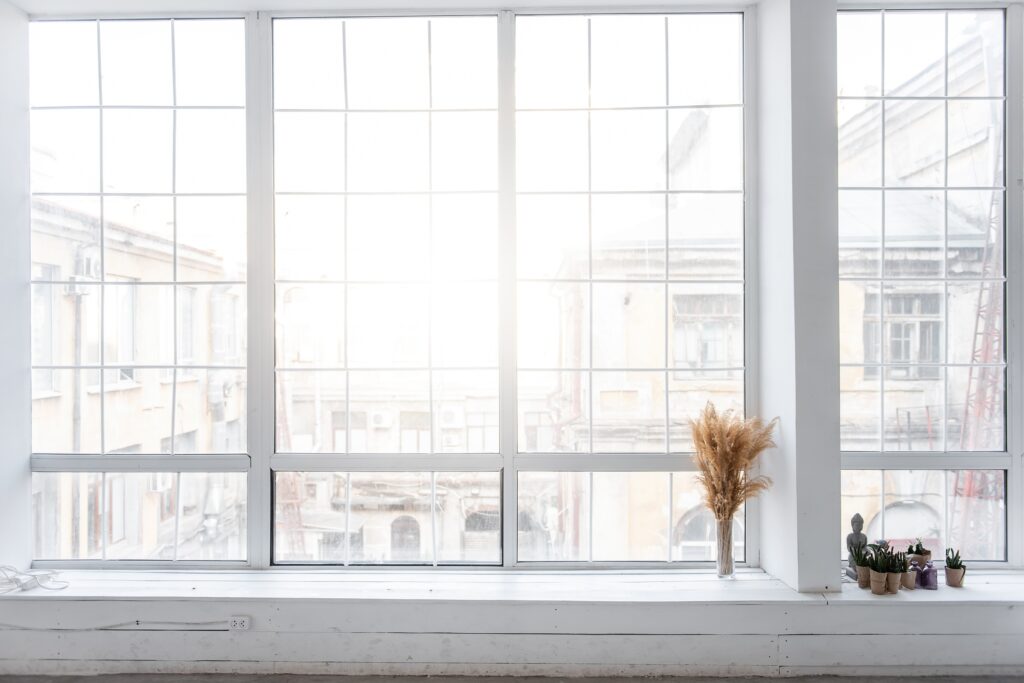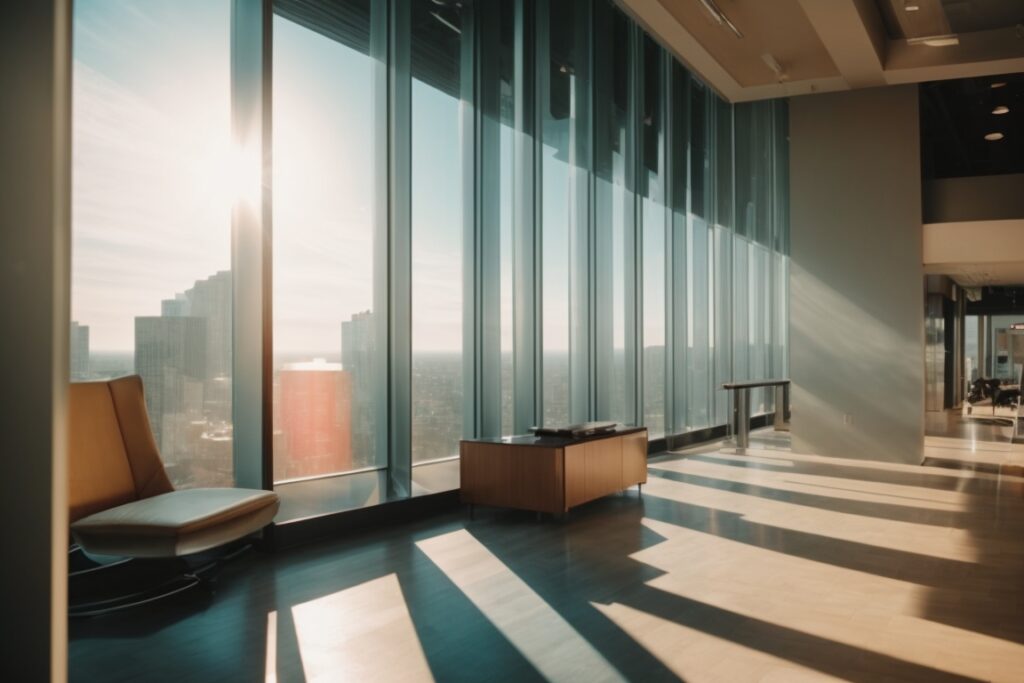
The Challenge with Sun Control in Chicago’s Architectures
In the bustling metropolis of Chicago, where modern skyscrapers meet historic architecture, the battle against harsh sunlight is a prevailing concern for many building owners and architects. Sun control window film becomes not just an aesthetic choice, but a necessity to combat the intense glare and heat from the sun that can penetrate these expansive glass structures. Chicago’s unique climate, characterized by long, sunny summers and cold, bright winters, adds layers of complexity to designing buildings that are both functional and comfortable.
This constant solar exposure leads to significant problems such as increased energy costs, due to the high demand for air conditioning, and the risk of UV damage to the interiors, which can fade furniture, artworks, and fixtures. Moreover, the excessive sunlight can create an uncomfortable work environment, reducing productivity and jeopardizing occupant comfort. These issues underscore the urgent need for an effective solution that can address the climatic challenges specific to Chicago.
Choosing the right sun control window film in Chicago is therefore not just about improving the aesthetics or protecting against UV rays; it’s about enhancing the energy efficiency and usability of spaces. Architects and building owners are on a constant quest to find solutions that meet both the city’s strict energy codes and occupants’ needs for comfort and functionality—the sheer scale of this need highlights the citywide urgency for innovative sun control options.
Interplay of Sunlight and Structure in the Windy City
Chicago’s celebrated skyline is a canvas of architectural marvels, with transparent glass façades that capture and manipulate natural light. However, this aesthetic achievement comes with its own set of challenges, particularly with regard to the intense and sometimes harsh sunlight that the city experiences. The sun control window film becomes an unspoken necessity in this scenario.
In the bustling streets and towering buildings of Chicago, the use of large glass panels has been a double-edged sword. While they bring in natural daylight and enhance the visual appeal of spaces, they also introduce problems like significant solar heat gain and harmful UV exposure. This not only impacts the comfort levels inside these buildings but also escalates energy consumption due to increased use of air conditioning systems during the warmer months. Moreover, prolonged exposure to direct sunlight can lead to fading of interior furnishings, which impacts the longevity and aesthetic value of interiors in both residential and commercial properties.
The nuances of this present scenario underline the critical balance that needs to be maintained between leveraging natural light and mitigating its adverse effects. Chicago’s architects and building managers continuously seek solutions that do not compromise on the city’s architectural beauty while enhancing occupant comfort and sustainability. Sun control window films offer a promising solution to these challenges, balancing light and heat to create healthier, more energy-efficient environments.
The Downside of Excessive Sunlight for Chicago Buildings
While natural light is generally seen as a beneficial aspect for buildings, excessive sunlight can actually present significant challenges, particularly in a bustling metropolis like Chicago. For instance, buildings with extensive glass facades in the downtown area experience drastic temperature increases, which not only discomfort for the occupants but also lead to higher energy costs due to increased air conditioning usage. This issue is compounded by the urban heat island effect, where temperatures in the city can be significantly higher than surrounding areas, largely due to human activities and dense construction.
Moreover, excessive sunlight leads to the fading and deterioration of interiors such as carpets, furniture, and artworks, which can degrade the aesthetic value and atmosphere of historical and architectural significant spaces. These adverse effects highlight the urgent need for an effective solution like sun control window films, catering specifically to the needs of the architectural structures and their inhabitants by mitigating these issues while maintaining the visual and functional aspects of the buildings.
Transformative Impact of Sun Control Window Film in Chicago’s Urban Environment
Imagine the streets of Chicago, where the architectural beauty of every building is preserved in its pristine glory. The sun, often a relentless force, now becomes a benign presence thanks to the innovative application of sun control window films. Buildings that once suffered from excessive heat and fading interiors are now bastions of comfort and energy efficiency.
Envision a scenario where historical and contemporary structures alike bask in a balance of natural light, without the adverse effects of UV penetration. The interiors, shielded by sun control window films, maintain their vibrant colors and material integrity, reducing the need for frequent renovations. Office spaces, retail locations, and residential apartments all reap the benefits, with occupants experiencing enhanced comfort and lower energy expenses.
The skyline of Chicago is not only visually enhanced but also functionally optimized. These window films help in reducing the urban heat island effect, contributing to a cooler city environment. The contrast is striking – previously, windows contributed significantly to thermal gain, compelling the use of air conditioning on an extensive scale. Now, the energy consumption drops markedly as the heat rejection properties of the window films keep indoor spaces naturally cooler.
This transformation across Chicago shares a common thread of sustainability and aesthetic upkeep, turning oppressive summers into manageable and pleasant periods. No longer is sunlight something to be blocked out, but rather a natural element to be harnessed and controlled for optimal living and working conditions.
The potential of sun control window film in Chicago is a powerful testament to how modern technology can align with urban development to create healthier, more sustainable living environments. The enhancement of everyday life through such simple modifications paints a picture of a future where both beauty and functionality coexist seamlessly.
Upgrading Chicago’s Architectural Aesthetics with Sun Control Window Films
In the bustling urban landscape of Chicago, building aesthetics and daylight management have long posed significant challenges. While traditional windows offer unobstructed views, they frequently compromise on energy efficiency and interior comfort due to excessive solar heat gain. The introduction of sun control window film presents an ideal resolution – a transformative solution differing markedly from the present glazing practices prevalent in Chicago’s architectural scene.
Sun control window films offer a tailored blend of high optical clarity and advanced technology designed to filter out harmful UV rays while maintaining natural light intake. Unlike conventional tinted or reflective glass that can overly darken or change the appearance of building facades, these films preserve the exterior integrity and visibility. This is crucial in maintaining the iconic skyline of Chicago, which represents a mix of historical and modern aesthetics.
Moreover, these films integrate seamlessly with existing window systems, representing a significant shift from costly and disruptive window replacements. Their application is quick and non-intrusive, making it an ideal scenario for office buildings and residential units keen on upgrading window performance without the associated downtime or architectural limitations. By maintaining the existing windows and simply enhancing their performance, sun control window films stand out as a significantly different and effective option for meeting Chicago’s unique architectural and climatic demands.
Enhancing Chicago Living with Sun Control Window Film
Integrating sun control window film presents a wealth of benefits for Chicago residents, spanning economic, aesthetic, and personal realms. Economically, the primary advantage lies in significant energy cost savings. By blocking harmful UV rays and regulating indoor temperatures, these films reduce the need for air conditioning during hot summers and heating during chilly winters, leading to lower utility bills.
From a social and aesthetic perspective, sun control films maintain the architectural integrity of Chicago’s varied building styles while subtly enhancing them. They provide a modern look that can increase a property’s curb appeal and market value—important factors in the bustling Chicago real estate market. Additionally, these films can reduce glare, which not only improves comfort but also protects valuable furnishings and artwork from sun damage, preserving the interior beauty of homes and offices.
On a personal level, the use of sun control window films improves occupants’ comfort and health. By filtering out UV rays, they protect skin from potential sun damage and reduce eye strain from excessive light. The comfort of a temperature-controlled environment, combined with reduced glare, contributes significantly to a more pleasant and productive living or working space in Chicago.
Enhancing Urban Livability with Sun Control Window Films
In the bustling cityscape of Chicago, where architectural aesthetics and functionality go hand-in-hand, the need for efficient energy solutions is more pertinent than ever. Office buildings and residences alike face the twin challenges of maintaining natural light while managing heat and glare from the sun. Sun control window film emerges as a transformative solution that aptly addresses these concerns, providing a bridge toward achieving a superior urban living environment.
Installed on windows across Chicago, sun control window films reduce the penetration of harmful UV rays and excess heat, ensuring cooler, more comfortable interiors without compromising on natural light. They serve as a critical tool in the pursuit of daylighting design—a practice that enhances occupant productivity and well-being through exposure to natural light. By intelligently modulating light and heat, these films help in preserving the visual and thermal comfort of indoor spaces.
More than just practical solutions, sun control window films contribute to the aesthetic refinement of Chicago’s architectural landscape. They add a sleek, modern finish to buildings, enhancing exterior visual appeal while promoting environmental sustainability. By acting as a bridge between current inefficiencies and a state of enhanced environmental control and aesthetic beauty, sun control window films in Chicago represent a pivotal step toward optimizing both the look and function of urban structures.
Enhancing Chicago’s Architecture with Sun Control Window Film
In bustling cities like Chicago, where skyscrapers dominate the skyline and glare is a common challenge, sun control window film has become a crucial solution. The excessive sunlight not only increases indoor temperatures but also causes discomfort and fading damages to interiors. Sun control window film addresses these issues directly by mitigating heat gain and reducing glare, making indoor environments more comfortable and preserving the conditions of furnishings.
This innovative film technology selectively filters out harmful UV rays and manages how much natural light permeates through the glass. By doing so, it maintains an optimal balance of light and temperature, which is essential for both residential and commercial buildings. The efficiency of sun control window films allows HVAC systems to operate more effectively, leading to significant energy savings. This is particularly important in Chicago, where temperatures vary dramatically with the seasons.
Moreover, the application of sun control window film in Chicago does not compromise on style. Available in a variety of shades and finishes, it enhances the aesthetic appeal of buildings without altering their architectural design. This subtlety in design is imperative in a city known for its distinguished and historic architecture.
Thus, sun control window film is an exemplary solution in Chicago, combining functional performance with aesthetic flexibility. It not only solves the immediate problems of glare and heat but also contributes to longer-term energy conservation and interior protection goals.
Implement Sun Control Window Film in Chicago Now
Embrace enhanced comfort and aesthetic appeal in your Chicago property by incorporating sun control window film today. Begin by scheduling a consultation with our team of experts who will assess your specific needs based on your building’s orientation and window structure. We specialize in customizing window film solutions that not only reduce glare and heat but also complement the architectural aesthetics of your space.
Following the consultation, we will provide you with a variety of film options that match your requirements. Our onsite demonstration will help you visualize the potential improvements in daylight management and energy efficiency. Once you select the ideal window film, our licensed professionals will handle the precise installation, ensuring that every detail aligns with industry standards.
Don’t miss this opportunity to transform your space with sun control window film. Contact us today to start the process and enjoy a cooler, more comfortable environment in your Chicago property.







About The Author: Mike Kinsey
Mike Kinsey has more than a decade of experience installing window film in the Chicago area. His years of experience have allowed him to develop a deep familiarity with all of the different types and styles of window film on the market including the various security, privacy, decorative, and energy efficient options. Together, he and his team have completed hundreds of commercial and residential installs, totaling an accumulation of over 250,000 square feet. In addition to being an expert on top brands such as LLumar, C-Bond, HDClear, Solar Gard, Solyx, and Huper Optik, Mike is also certified by 3M, EnerLogic, and AIA for continuing education.
More posts by Mike Kinsey